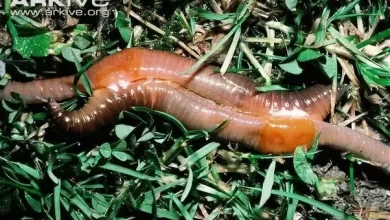Planting Rice in [11 Steps and with Photos]: The Guide You Need
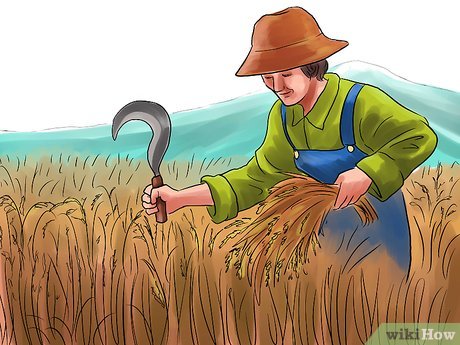
Did you know that there is a record of the existence of some8,000 varieties of rice, but the exact amount remains unknown?
Or… what does the rice represent?20% of food consumption worldwide??
In addition, rice is present in most cuisines in the world. Especially Chinese and Japanese (sushi!)
Plant Rice Step by Step:
- When? In autumn and spring.

- Where? Mainly tropical climates. Rice grows with a lot of light and with an ideal temperature of 23º.
- Harvest time? The cycle can last a whole year and is approximately every 3 months.
- How do we prepare the land? It adapts to a wide variety of soils.The optimum pH for rice is 6.6
- How do we water? At the beginning it is recommended to maintain a flood in the soil of at least 5 cm.
- How do we sow? Here step by step.
- How do we harvest? About 2 weeks after the soil has been drained, the rice will turn a golden color. That is the right time to harvest.
- Favorable associations? Legumes ( beans, broad beans, lentils, chickpeas or peas).
- Plagues and diseases? Rice borer, Pericularia oryzae and pudenta.
Rice cultivation began almost 10,000 years ago, in many humid regions of tropical and subtropical Asia.
It is believed that it was in India that it was first cultivated, although it was in China that the crop developed most strongly.
It is currently the most widely used cereal for human consumption and represents the basis of the cuisine of China, Japan, Vietnam, Thailand and Korea.
Hence, 90% of the cultivated hectares in the world are in Asia.
It is an easy-to-grow cereal. In the next article we tell youthe most efficient way to plant rice.
When to plant rice? The dates
We want to plant rice infall and spring.
Where to plant rice? The temperature and the light
It is a tropical crop, but rice can also be grown in temperate climates.
Rice grows best in bright light and warm temperatures. If the climate where you live does not guarantee long periods of heat, it is recommended to grow the rice indoors.
Therefore, choose a place where it receives a lot of sunlight.
The optimum temperature for its development is 23 ºC. With higher temperatures, plants grow faster, but the tissues are more susceptible to disease.
To germinate, the ideal temperature varies between 30 and 35 ºC. Above 40ºC germination does not occur.
The optimum for flowering is 30ºC. Above 50ºC it does not occur.
How do we water? Humidity
As for irrigation, care must be taken that the water level is adequate.
During the first days, the humidity level must be very high to protect the first shoots from the cold.
It is recommended to maintain a flood in the soil of at least 5 cm.
With the first outbreaks, the amount of water is usually raised up to 15 cm, although some experts argue that this increase is not highly recommended.
As plants grow, watering levels should be lowered to allow the leaves to breathe.
The leaves should protrude above the water level. In this phase, a renewal of the water can be carried out to achieve the best oxygenation and temperature.
Once the crop is implanted, it is possible to use the dry season, which consists of cutting off the entrance of water and allowing the soil to dry up to a greater or lesser degree.
What is done when the tillering phase ends until the beginning of the formation of the spikes, approximately at the end of June and July.
How do we prepare the land for rice cultivation? Substrate and nutrients
The crop adapts to a great variety of soils, fromvery sandy to clay.
However, it is usually grown on fine- and medium-textured soils, typical of wide flood plains and river deltas.
The soil should be slightly acidic and clayey for best results.
Fine-textured soils make tillage difficult, but they are more fertile as they have a higher content of clay, organic matter and nutrients.
In the event that the soil lacks iron, you can add iron sulfate.
The optimum pH for rice is 6.6
You should keep in mind that most soils change their pH towards neutrality within a few weeks after the flood.
How to plant rice step by step
1) Clear the ground
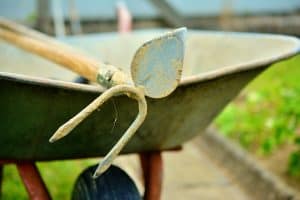 Extracts weeds and remains of previous crops and all kinds of residues.
Extracts weeds and remains of previous crops and all kinds of residues.
Rice seeds need all the nutrients and space they can get.
2) Level the ground
If you are using buckets, fill them with at least 15 cm of moist soil.
3) Flood the area where you are going to plant
Keep in mind that it is much easier to flood small spaces than large spaces, so it is recommended to use seedbeds even when planting outdoors, since this way, it is easier to manage and maintain the crop.
4) Enter the seeds
Introduce the rice seeds when the water is clear and the sludge has settled at the bottom. The sowing should be done with the ground flooded with a height of about 5 cm.
Add mulch to the soil, lightly covering the rice grains.
Mulch retains moisture, which is particularly beneficial in very dry climates.
5) Make sure the soil stays moist
If you prefer, you can keep the water level at 5 cm.
6) Scatter the plants
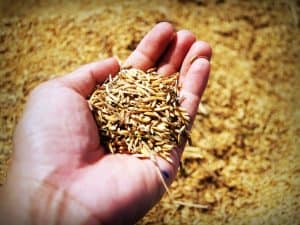 Once the plants have sprouted, select the healthiest and strongest seedlings. When they grow to 18cm, spread them no more than 30cm apart.
Once the plants have sprouted, select the healthiest and strongest seedlings. When they grow to 18cm, spread them no more than 30cm apart.
If you have planted in seedbeds, transplant them when they reach between 12 and 18 cm in height.
They should be planted on a muddy bed.
7) Eliminate weeds
Flooded soils favor the abundance of weeds in the rice field. Remove them carefully so as not to damage your rice plants.
Microscopic and macroscopic algae are common in rice cultivation.The damage caused by these algae depends on the species and the stage of cultivation.
In general terms, algae compete for light and oxygen, producing chlorosis and seedling wilting.
The development of algae is faster the higher the temperature of the water and air.
In case of noticing the presence of algae, a chemical treatment is recommended for its control.
9) Wait for the rice to ripen
This will take approximately 3-4 months. When the plants reach approximately 17 centimeters in height, cut off the flow of water and drain the excess.
Over the course of two weeks, the rice grains will turn from green to gold. That’s when you’ll know they’re ready.
The Harvest and Gathering
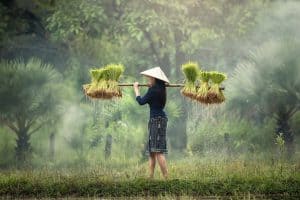 The optimal harvest time iswhen the ear reaches its physiological maturity.
The optimal harvest time iswhen the ear reaches its physiological maturity.
So it is important to let the rice grains ripen.
About 2 weeks after the soil has been drained, the rice will turn a golden color. That is the right time to harvest.
Cut the stalks just below the heads, which is where the rice grains are. You’ll notice tiny pockets at the top of the stem, those are the rice hulls.
After threshing, rice can present a humidity of 25 to 30%, so it must be dried until it reaches a humidity level of less than 14%.
To accomplish this, wrap the husks in newspaper and store them in a dry, sunny place for 2-3 weeks.

Favorable associations of rice
They associate well with legumes (beans, broad beans, lentils, chickpeas or peas).
Legumes produce amino acids that rice absorbs directly.
Common pests and diseases
rice borer
It is a lepidoptera native to Asian countries. They cause slight rottenness and penetrate the stems until they affect the pomegranate.
For its prevention, it is recommended to flood the plots during the winter.
For its control, a release of natural parasites of the Trichogramma and Apanteles genera can be made.
Another control method is the use of pheromone traps.
Pudent
It is an insect of the Hemiptera order, better known as the stink bug.
It chops the grain producing little spots that are known as “partridge eye”.
To combat them, potassium or biodegradable soap can be applied to the underside of the plants.
In addition, the destruction of the vegetation after harvesting and in the margins surrounding the paddy field is recommended.
Another method of control is the use of traps.
Pericularia oryzae
It is caused by a microscopic fungus that produces a toxic substance known as pericularin , which inhibits the growth of tissues and disorganizes them.
For its control, Bordeaux mixture is used, at a rate of 1,200 l/ha, but the treatment must be repeated to be effective, which is why it can be very expensive.
To prevent it, varieties that are not very sensitive to fungus attack can be used.


![Photo of Prune Ficus Benjamina: [Importance, Time, Tools, Considerations and Steps]](https://www.complete-gardening.com/wp-content/uploads/2022/08/prune-ficus-benjamina-importance-time-tools-considerations-and-steps-390x220.jpg)
![Photo of Pests and Diseases of the Peach Tree: [Detection, Causes and Solutions]](https://www.complete-gardening.com/wp-content/uploads/2022/08/pests-and-diseases-of-the-peach-tree-detection-causes-and-solutions-390x220.jpg)

